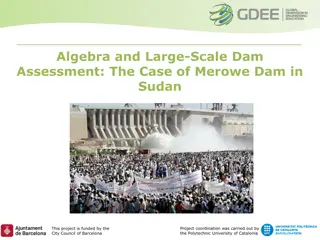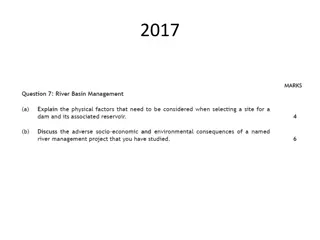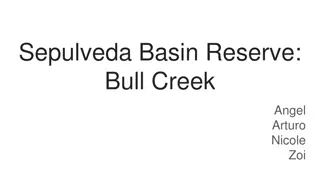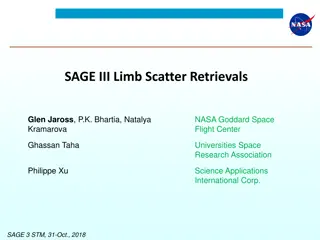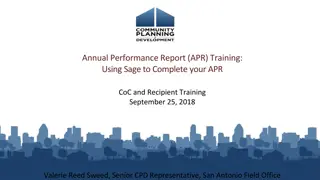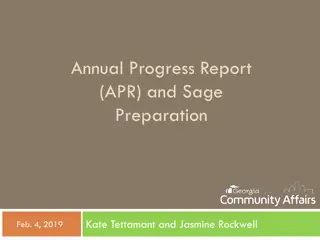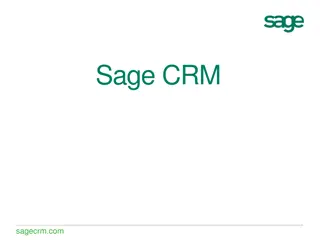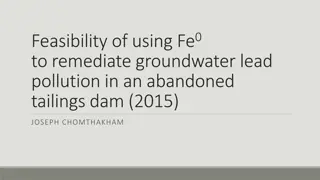California Sage Scrub Study: Sepulveda Dam Reserve
Field site at the Sepulveda Dam project explored through an exploratory study on the South Reserve area. The study focused on vegetation restoration, comparing native and exotic species, and analyzing landscape changes. Materials, methods, data analysis, and results were detailed, providing insights into the impact of dam construction on the natural habitat.
Download Presentation

Please find below an Image/Link to download the presentation.
The content on the website is provided AS IS for your information and personal use only. It may not be sold, licensed, or shared on other websites without obtaining consent from the author.If you encounter any issues during the download, it is possible that the publisher has removed the file from their server.
You are allowed to download the files provided on this website for personal or commercial use, subject to the condition that they are used lawfully. All files are the property of their respective owners.
The content on the website is provided AS IS for your information and personal use only. It may not be sold, licensed, or shared on other websites without obtaining consent from the author.
E N D
Presentation Transcript
Exploratory Study: South Reserve of the Sepulveda Dam Veronica Allen Curran Miller Tony Gonzalez Zachary Hernandez
Field Site: Sepulveda Dam Project of the Corps of Engineers in response to 1938 flood First area of the Sepulveda Basin to be revegetated with California native plants Original development plan of south reserve: grassland habitat, riparian woodland, coastal sage scrub, aquatic habitat
Introduction: California Sage Scrub Restoration After construction of the dam, natural state of CSS in the area threatened due to plowing Compare the effect this had on the landscape over time Hypotheses: 1) There is a significant difference in mix of dominant species between our observations and previously collected data. 2) There is a significant difference in the mix of native species and exotic species for both the North and South Reserve.
Materials & Methods Garmin GPS and iPhone GPS via GPS Status Clipboard & data sheet Species reference list Pencil Transect line 8 transects of 10 meters each
Data Analysis Employed a Chi-Square analysis to compare counts and evaluate comparison and association Alpha standard of 0.10 Exploratory study
Data: North Reserve 1) Baccharis pilularis 2) Bare dirt 3) Baccharis salicifolia
Data: South Reserve 1) Baccharis pilularis 2) Bare dirt 3) Brassica nigra 4) Sorghum halepense
Data: Native vs Exotic Species Old North Reserve vs New South Reserve Old South Reserve vs New South Reserve
Results For the North Reserve our X2calc of 14.332 was higher than our X2crit of 4.605. This prompts us to reject the null hypothesis. Our alpha of 0.10 was greater than our p-value of 0.001. Lastly our Cramer s effect size at a mere 0.281reinforced that our data is not significant enough. We had a corrected power of 0.967. For the South Reserve our X2calc of 51.413 was also greater than our X2crit 6.251, again rejecting the null hypothesis. Our standard alpha level of 0.10 was also greater than our p-value of less than 0.001. The Cramer s effect size of 0.422 indicated that our data has a moderate association. Our corrected power is 1.000. When comparing native versus exotic species for the North Reserve and our observations we had an X2calc of 4.048 was higher than our X2crit of 2.706, causing us to reject the null hypothesis for another time. Our alpha level of 0.10 was larger than our p- value of 0.044. Our corrected power is 0.643. The Cramer s effect size resulted in 0.027. When comparing native versus exotic species for the South Reserve and our observations we had an X2calc of 28.372 and X2crit of 2.706 suggesting us to reject the null hypothesis. Our alpha of 0.10 was greater than our p-value of less than 0.001. We had a Cramer s effect size of 0.263 and a corrected power of 1.000.
Discussion Significant difference CSS status in the Sepulveda Dam Basin North Vs. South Analysis South Vs. South Analysis Exotic Vs. Native Analysis 48 native; 14 invasive/exotic; 26 bare ground (Our findings) 287 native; 286 invasive/exotic; 85 bare ground (Historically) What does this mean? Overwhelming presence of Baccharis pilularis (Coyote Brush)
Compounding Factors Vagrancy Clean up initiatives & effect on environmental degradation
Conclusion There is significant data We fail to reject the the null Baccharis salicifolia only found in riparian area in north Majority of the exotic species that we observed while transecting were found by riparian area, specifically Silybum mariamum which is toxic cattle and sheep and is new to the data The other new species observed was Camissoniopsis robusta We recommend further research, in the South Reserve when comparing native and exotic between the previously observed species in the North Reserve. Also research to be done only in the spring due to season changes, easier to identify plant species.



